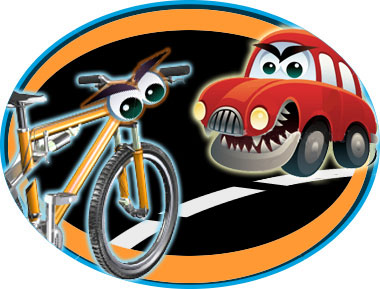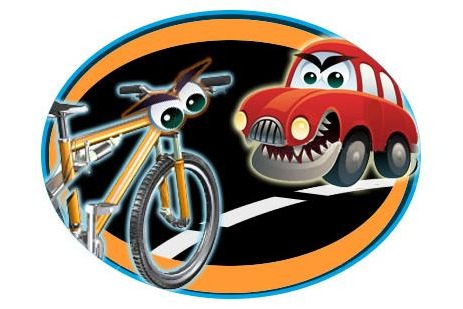 If you’ve ever been behind the wheel of a car, you’ve felt it: The dead certainty that everyone around you is a complete idiot who should get the hell out of your way.
If you’ve ever been behind the wheel of a car, you’ve felt it: The dead certainty that everyone around you is a complete idiot who should get the hell out of your way.
If you’ve spent much time riding a bicycle, you have been the target of that wrath. And without the protective metal-and-glass bubble that shields drivers (mostly) from each other’s anger, it’s easy to feel the hate. A horn honked in your ear by someone zooming past, an insult shouted out a window, the grit kicked up in your face by someone passing too close — just to make a point. It’s scary.
The expression “road rage” apparently originated in America in the 1980s, and the concept was absorbed into our national DNA a long time ago. It’s part of how we see ourselves, a danger so familiar it’s become mundane, a cultural cliché.
Driving a car does something strange to you. Tom Vanderbilt, author of the book Traffic: Why We Drive the Way We Do (And What It Says About Us), has explained it this way:
What happens to most of us, in most driving conditions, is that we’re losing some of the key attributes that facilitate human cooperation and, in a larger sense, society.
Eye contact, for example, has been shown in any number of experiments to increase the chance of gaining cooperation – that’s why when drivers give you what was called on Seinfeld the “stare-ahead,” your chances that they’ll let you merge in ahead of them are greatly reduced.
Then there’s the anonymity in traffic – there’s no one to spread rumors or gossip about you about how bad your behavior was — not to mention the lack of consequences for acting like an idiot. It’s all strikingly similar to the way we act on the internet, in what’s called the “online disinhibition effect.”
Now Vanderbilt has written a terrific article in Outside about the way that people driving cars and people riding bicycles interact with each other — and the psychology behind the “bikelash” that’s taken hold as bicycles have become increasingly popular as a mode of transportation as well as recreation.
People on bikes, of course, are not equal players in the battle for road space. They don’t have a metal shell to protect them. Maybe that’s why they are easy targets for road rage: Because they look a lot more human than people in cars do, and because they rely on eye contact and hand signals to express their intentions, rather than on blinking lights and sheer metallic muscle. Because they are more vulnerable.
Vanderbilt writes about how the idea that “cyclists” are a group unto themselves, an “other,” creates some of the problem:
This dynamic appears on the road in all kinds of ways. “We know that merely perceiving someone as an outsider is enough to provoke a whole range of things,” says Ian Walker, a researcher at the University of Bath who specializes in traffic psychology. “All the time, you hear drivers saying things like ‘Cyclists, they’re all running red lights, they’re all riding on sidewalks,’ while completely overlooking the fact that the group they identify with regularly engages in a whole host of negative behaviors as well.” This social categorization is subtle but dominant, he points out. When people are given a piece of paper and asked to describe themselves, “men never write, ‘I’m a man.’ Whereas women will write ‘woman’ because being male is the ‘default’ status in society.”
And so it is with cyclists. In a country like the Netherlands, which has more bikes than people and where virtually the entire population cycles at one time or another, the word cyclist isn’t meaningful. But in the U.S., the term often implies something more, in both a good and a bad sense.
There’s also a not-so-subtle class element in play:
Yes, cultural politics are getting weird, which may also explain some of the tension, as Brian Ladd, author of the 2008 book Autophobia, argues. “Most Americans,” he wrote in a December post on the urban-planning Web site Planetizen.com, “know one thing about the bicyclists they see on the roads: they are losers, and you thank God you’re not one of them.” But wait, he says, noting the fashionability of cycling: Who’s doing the sneering here? “It’s harder to dismiss cyclists as beneath contempt,” he says, “when you suspect that they might just be contemptuous of you.”
You should read Vanderbilt’s article in full, because it’s packed with great stuff (he rides along with one guy who commutes 50 miles each way by bike twice a week, and talks with another who documents his interactions with angry drivers on video). Unlike a lot of the writing on this topic, it is well-reasoned and well-researched. In the end, Vanderbilt comes to a pretty simple conclusion:
In thinking about how to improve driver-cyclist relations in America, the easiest thing is to simply get more people on bikes.
Because that way, it won’t be us vs. them. It’ll just be us.



